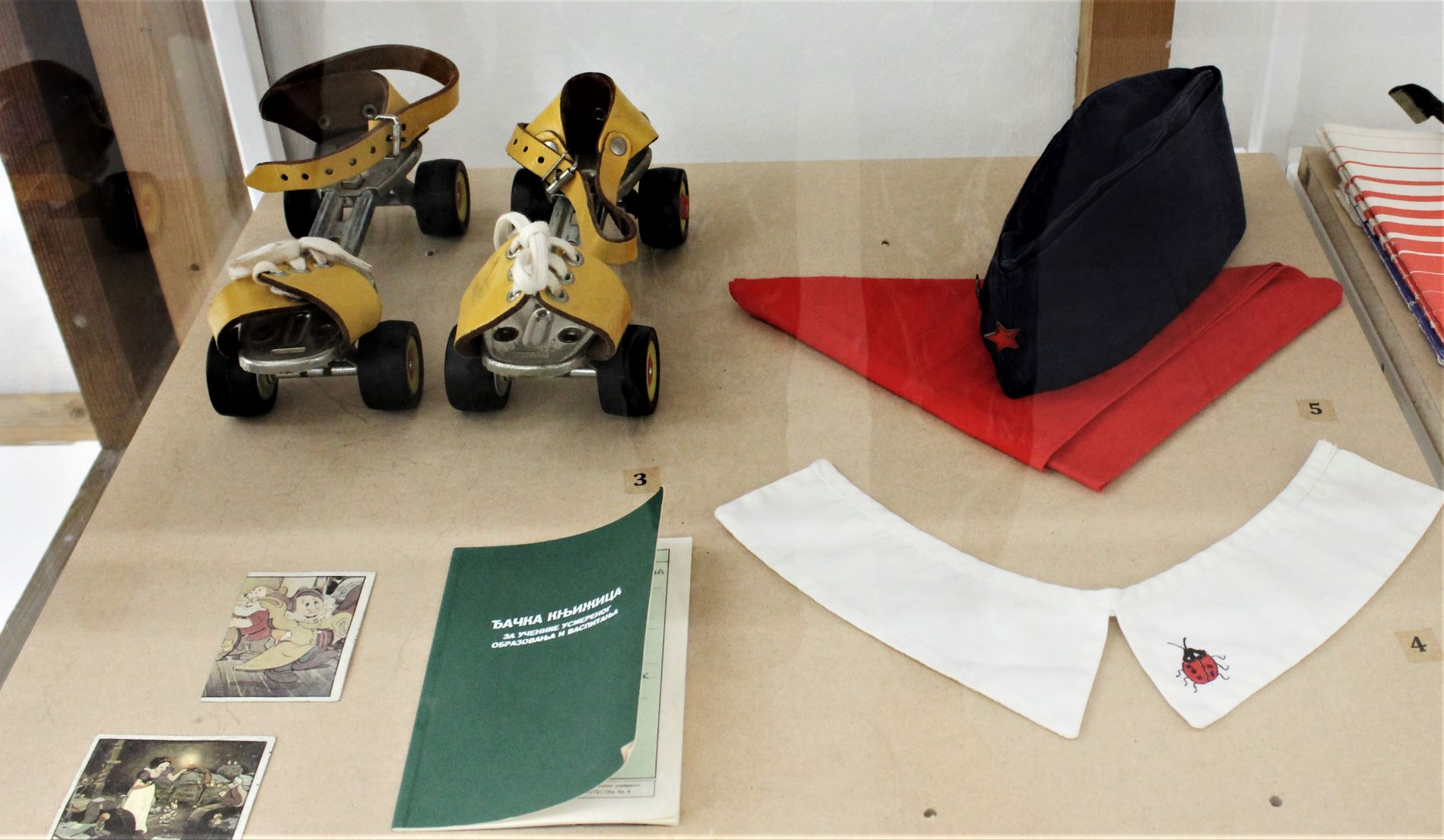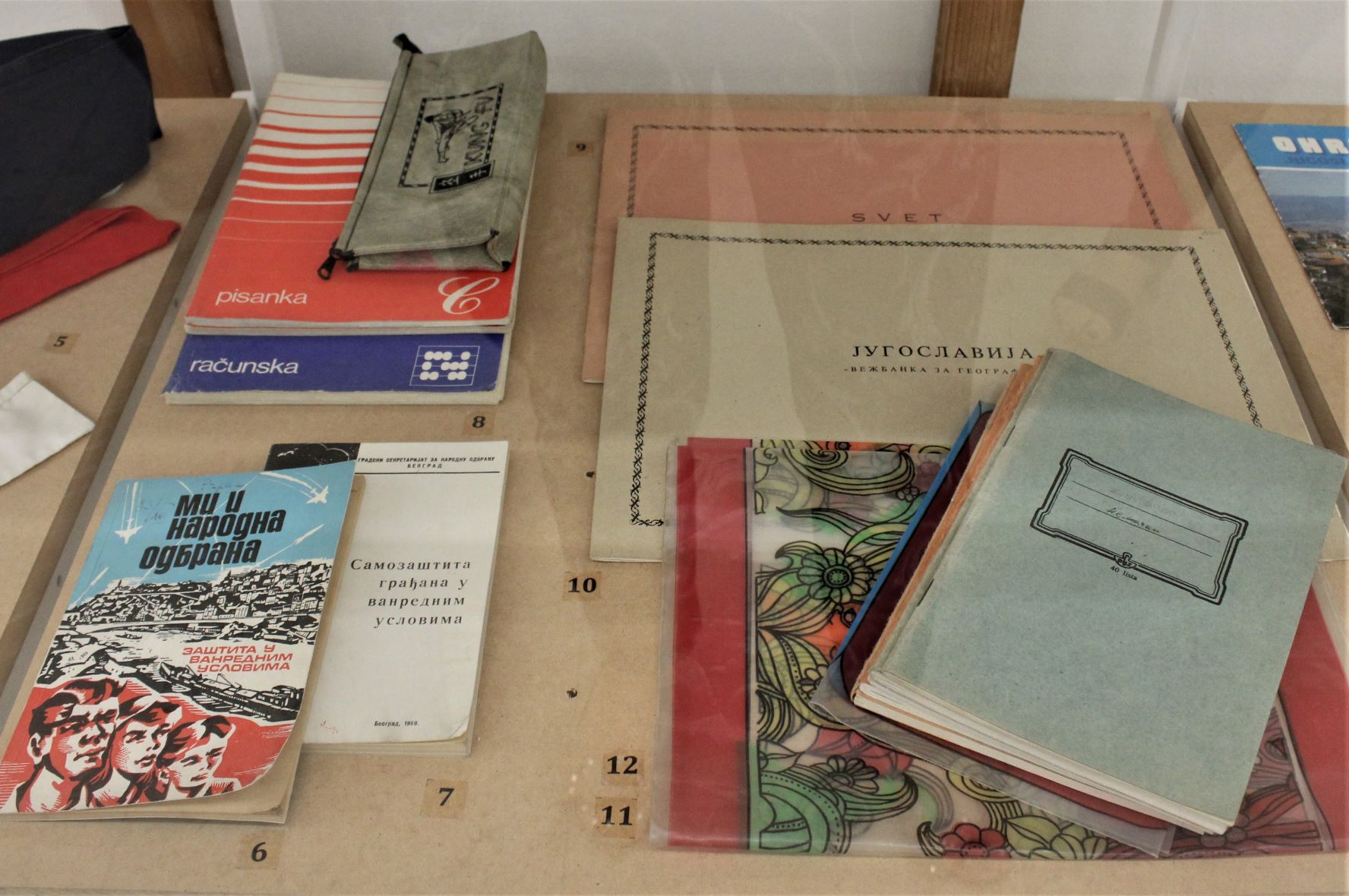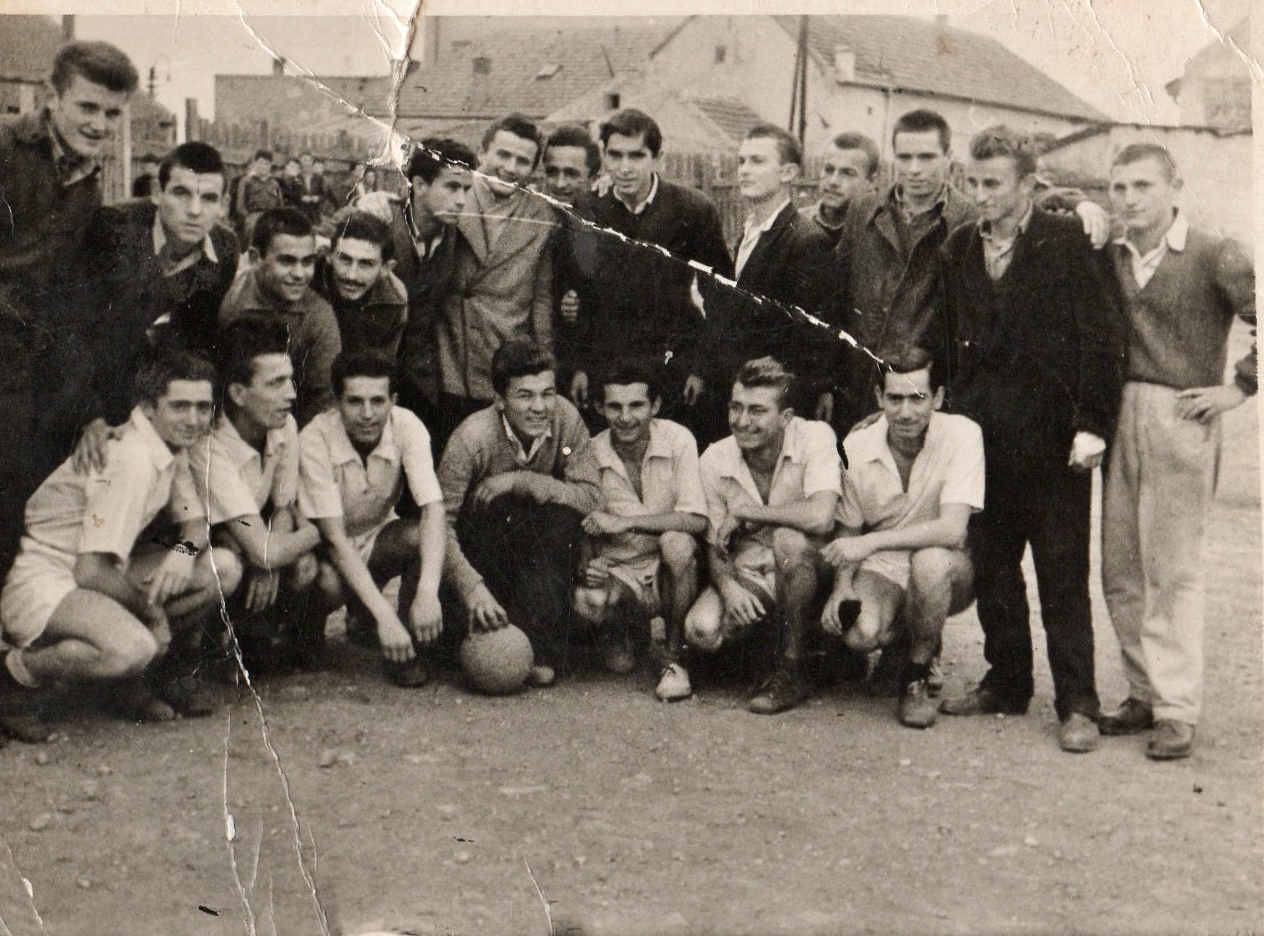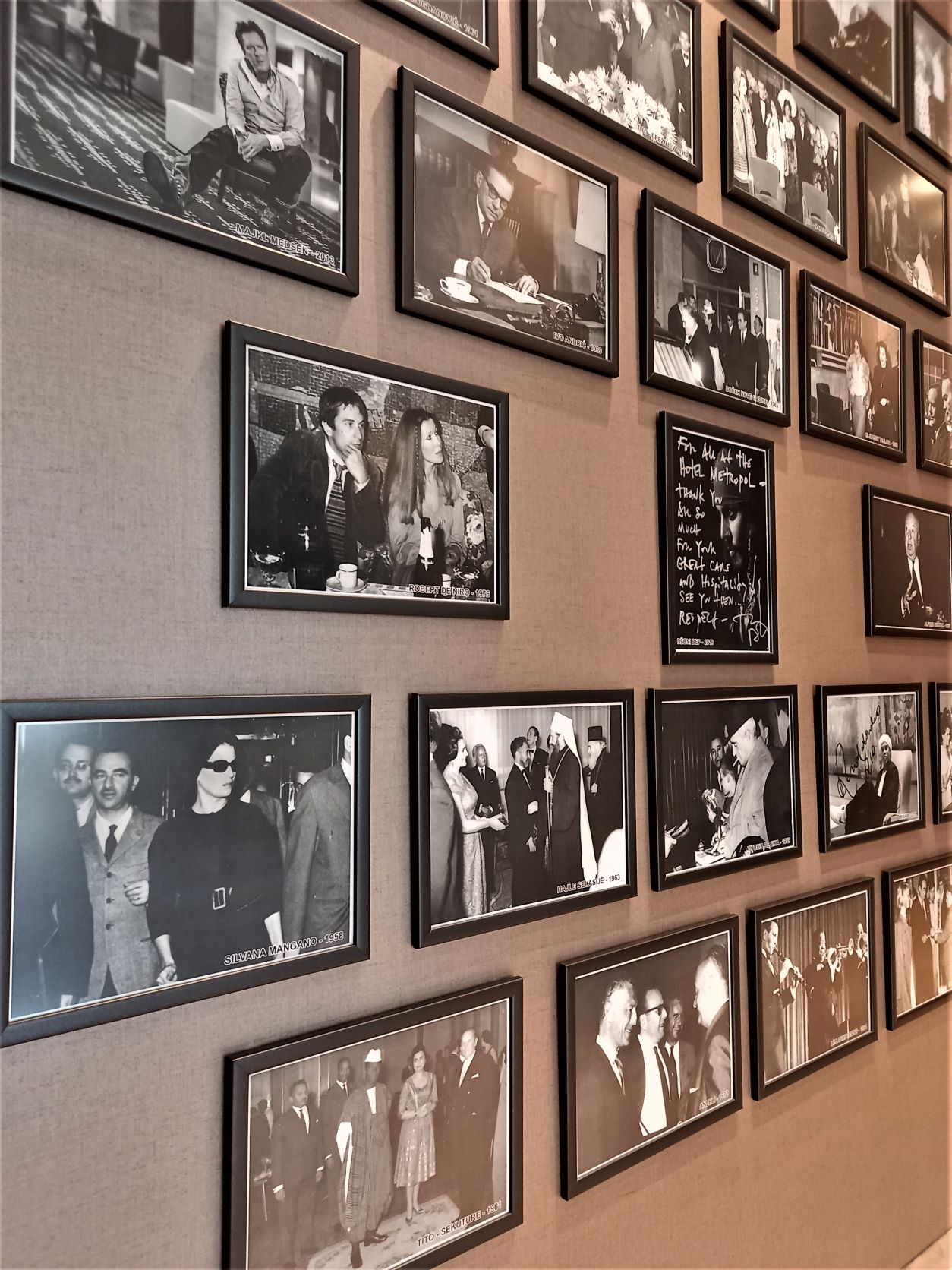Yugoslavia emerged from the Second World War with a new political order. The monarchy was abolished, and Belgrade became the capital of a state that underwent several name changes: Democratic Federal Yugoslavia (DFJ, 1945), Federal People’s Republic of Yugoslavia (FNRJ, 1945-1963), and Socialist Federal Republic of Yugoslavia (SFRY, 1963-1992).
Beograd was liberated on October 20, 1944, and became the capital of the state with a new political system. After the war, only 270,000 residents remained in Belgrade. Soon, a significant wave of migration occurred, turning Belgrade into an immigrant city, where one-third of the population, on average, consisted of native Belgraders, while two-thirds were newcomers from various parts of Yugoslavia.
The revolutionary government broke ties with the old values of civil society, establishing a new political order in line with communist doctrine. The ideology influenced all aspects of life, placing Belgraders under the full control of the Party and the state. Monarchical symbols were removed, private property was confiscated and became state-owned.
The Theater Square became Republic Square, and the Brotherhood and Unity Bridge (today’s Branko’s Bridge) replaced the destroyed King Alexander Bridge. The former Royal Court Park became Pioneer Park, streets named after members of the monarchy were often renamed after national heroes, and the former crown was replaced by the five-pointed star.
In the aftermath of the war there was a widespread poverty, but with the country’s opening to the West, there soon came a significant economic upturn. Despite over 50% of industrial facilities in the city being destroyed or damaged during the war, the construction of factories and urban infrastructure began. The city acquired department stores, hotels, the Fairgrounds, and the congress center Sava.
INDUSTRY
In Zemun, the electronic and pharmaceutical industries, as well as the Ikarus bus factory, flourished. On Novi Beograd, the machinery and tractor industry IMT saw development, while in Rakovica, there was a focus on the production of tractors and motor vehicles, along with the electro-industry. Železnik was known for machinery and metal construction industries, while Pančevo specialized in the chemical industry. The Tito Shipyard on Novi Beograd became the largest and most modern Yugoslav shipyard. The main producer of food products was PKB (Agricultural Combine Belgrade).
After the confiscation of property from pre-war owners of department stores, socialist trading enterprises called “Narodni magazini” were established, but they were generally poorly supplied. The turning point came in the 1960s with the establishment of the “Robne kuće Beograd” (Department Stores Belgrade), which became the largest retail system in the Balkans. The newly constructed department store on Terazije was a special attraction due to the installation of the first escalators.
TRANSPORTATION
Urban transportation was in poor condition until the early sixties when the famous British Leyland buses and Breda trams from Italy arrived in Belgrade. These vehicles became a source of pride for Belgraders and symbols of public transport. Trolleybuses were also introduced, with the first trolleybus line running from Kalemegdan to Slavija. Buses were green, while trams and trolleybuses were red.
The “Fića” (Zastava 750) became the national car of the sixties, affordable to almost everyone through credit purchases. Alongside domestic cars, foreign vehicles, mostly from West Germany and Italy, were also present on the streets. Vespas became trendy during this period, initially popularized by football players and later adopted by girls. The most famous Vespa rider was Beba Lončar in the movie “Love and Fashion.”
The national airline JAT (Jugoslovenski Aerotransport) was established in 1947. Due to the increasing air traffic, a new airport, Belgrade Nikola Tesla Airport, was opened near Surčin in 1962. One of JAT’s significant achievements was its first around-the-world flight with a B-727 aircraft on the route Belgrade – Beirut – Bombay – Singapore – Tokyo – Honolulu – Los Angeles – New York – London – Belgrade.
MEDICINE
At the end of the war, Belgrade had only six hospitals. However, there was substantial development in medical institutions afterward. Various medical facilities were established, including the Gynecological and Obstetric Clinic, the City Hospital for Chest Diseases in Bežanijska Kosa, the Institute of Radiology and Oncology, the Institute for Mental Health, and the Psychiatric Hospital in Padinska Skela. Other institutions included Dr. Dragiša Mišović Hospital, the Institute for Mother and Child, the Dental Polyclinic, and numerous health centers.
NUTRITION
Immediately after the war, during a period of great scarcity, food was rationed and not freely available. Citizens were categorized based on their occupations, determining the number of food rations they received. Workers received the largest food allocations, but the situation began to improve in the 1950s. In the 1960s, there was an increase in living standards and the opening of modern supermarkets and restaurants.
The first supermarket in Belgrade opened in 1958 at Cvetni trg, and in 1963, a modern supermarket started operating in Čika Ljubina Street. The introduction of supermarkets following the American model was part of the Americanization of socialist society. It allowed citizens to freely choose items from shelves, marking a significant departure from the previous standards of markets and small grocery stores.
During socialism, private initiative was suppressed, and there were few establishments resembling those found worldwide. The restaurant Snežana, established in 1958, became the first state-owned pizzeria in the 1970s. The first café, Zlatni papagaj, appeared in Belgrade in 1980. In various locations across the city, there were PKB (Agricultural Combine Belgrade) hot dog kiosks. They cooked sausages and hot dogs in large pots, selling them in buns with mustard. PKB made a revolutionary move by packaging milk and yogurt in tetra packs instead of the traditional glass bottles.
EDUCATION
In socialist Yugoslavia, education and upbringing in the school system took place in the spirit of communism and the nurturing of the traditions of the People’s Liberation Struggle. The personality of Josip Broz Tito, the legacy of the People’s Liberation Struggle (NOB), and the revolution were present in school names, literature, textbooks, curricula, and programs.
All first-grade students in elementary schools became members of the Pioneers organization on November 29th, the Republic Day. On this occasion, they took the Pioneer oath and received a red Pioneer booklet, resembling the party’s color. The red scarf and the Tito cap – a blue hat with a five-pointed star – were symbols of the Pioneers. The new system introduced mandatory eight-year elementary education, followed by four years in various-profiled high schools. The high school system underwent a change in 1978 when so-called “professional schools” were established, named “šuvarice” after their creator, Dr. Stipe Šuvar. In these schools, practical work was mandatory throughout the entire education period.
From the mid-fifties to the mid-eighties, prescribed school uniforms were worn. These uniforms had a simple design and were in a dark blue color, resembling work uniforms. The objectives were to easily identify students on the street, minimize the soiling of personal clothes, and conceal social differences.
The values of socialist society were reflected in the names of schools, often named after prominent figures of the communist movement, national heroes, or dates related to the People’s Liberation Struggle. In the same spirit, school trips were organized, usually following the paths of brotherhood and unity or the paths of the revolution. A must-visit destination was Kumrovec, Tito’s birthplace, and other locations such as Kozara, Jajce, Tjentište, Jasenovac, and Šumarice.
In 1951, with the Law on People’s Schools, religious education was officially banned, and the following year, the Faculty of Theology was separated from the University of Belgrade.
Although children sang partisan and patriotic songs in school, their everyday life gradually began to resemble that of Western children. Print media and cinemas became filled with Disney characters over time. Comic books were sold at kiosks, and there was an increasing variety of toys available.
The party organized a series of mass spectacles in honor of Victory Day, Tito’s birthday, or successfully completed labor actions. The first Youth Relay of Yugoslavia started in May 1945 on the occasion of Tito’s birthday, and from 1957, this date began to be celebrated as the Youth Day. During this event, a relay was carried throughout Yugoslavia, and on the grand rally at the JNA Stadium on May 25th, it was presented to Tito.
Basketball achieved significant success with generations of players who began their careers on the courts at Kalemegdan, such as Vladimir Cvetković, Ljubodrag “Duci” Simonović, Dragan Kapičić, and Zoran “Moka” Slavnić. The most popular Yugoslav basketball player was Radivoj Korać (1938-1969), the most efficient player in several national and European championships. Besides the legend that he could score 50 points per game, he is also remembered as the man who brought the first Beatles record to Belgrade.
The majority of sports centers in Belgrade today originated during the socialist Yugoslavia period: the Sports-Recreational Center Tašmajdan, the sports center in Košutnjak with 33 open sports fields, six halls, and an indoor swimming pool, the Hala sportova in Novi Beograd, and the Sports Center 25. maj. The first modern sports center Tašmajdan, with pools and an ice rink, served for recreation, socializing, entertainment, and the development of top-level sports. The rapid development of sports infrastructure enabled Belgrade to host prestigious international competitions and the first major concerts of foreign music stars.
Ada Ciganlija, once an island on the right bank of the Sava River, became a peninsula by damming the river and connecting it to the mainland. This created the Sava Lake, four kilometers long and 250 meters wide. Since then, Ada Ciganlija has become the “Belgrade Sea” and the largest urban sports and recreational center.
FASHION
The post-war years were initially characterized by emulation of Moscow’s House of Fashion, and post-war austerity led to clothing being obtained through rationing coupons. These coupons could secure one cotton dress, a jumpsuit, panties, a bedsheet, two pairs of socks, and two pairs of stockings. This system was abandoned in 1951 when goods were released for free sale.
From the early fifties, fashion centers in Paris, London, and New York became the new role models. Belgraders began following global trends, fashion houses opened, fashion shows were held, and local designers gained fame, even in Paris. The latest fashion trends were primarily accessible to Belgraders through “Praktična žena” and “Bazar,” and from the sixties, they had access to foreign fashion magazines such as Burda.
Jeans became particularly sought-after in the fifties and were not always easy to obtain. These status symbols, representing rebellious youth and the allure of the West and America, were often smuggled from abroad. Trips to Trieste were a way for Belgraders to get jeans and Western clothing. Those who couldn’t make it to Trieste bought similar items from commission shops, specialized stores for foreign goods, which numbered around twenty in the city.
The most successful fashion designer in socialist Yugoslavia, Aleksandar Joksimović, started by creating uniforms for nurses, saleswomen, and sanitation workers. He soon became a fashion designer inspired by medieval Serbian themes (collections Simonida and Prokleta Jerina), achieving great success, even in Paris. He pioneered socialist haute couture in Yugoslavia and turned fashion shows into choreographic spectacles.
The late sixties and early seventies were marked by fashion manufacturers Beko, Obuća Beograd, Koštana, Prvi maj, as well as major fashion houses Jugoeksport and Centrotekstil. The first fashion shows were attended by several thousand people, and police had to maintain order. Belgraders mostly wore shoes from Obuća Beograd but preferred buying Italian footwear.
CULTURE
Immediately after the war, mass culture was under Soviet influence, but from the fifties, Western culture started to prevail. Western influences became increasingly present in music, film, and everyday life. In the fifties, young people preferred attending dances organized in cultural centers. In the early sixties, new places for dancing emerged, like the club Euridika and the Dancing hall of Dom omladine. Belgrade got its first discotheque at the end of the sixties, Diskoteka kod Laze Šećera, located next to Atelje 212 theater, making it the first discotheque in communism.
The sixties also saw the rise of Belgrade’s rock and roll scene, featuring bands like Siluete, Elipse, Zlatni dečaci, and Crni biseri. They played in numerous Belgrade clubs, and the peak of the city’s concert life was the Gitarijada held at the Belgrade Fair.
In 1968, the Student Cultural Center (SKC) was opened, supposedly as a concession to dissatisfied students who initiated demonstrations that year due to social inequalities. It was also a way to control the gathering of young people.
Film experienced a significant upswing in the SFRY, covering all genres and engaging in major co-productions. Partisan films, often influenced by American Westerns, gained particular popularity. The emergence of the Black Wave also contributed to the success of Yugoslav cinema, as it critically portrayed the negative aspects of socialist society. The focus on the West, the production of numerous co-productions, and the establishment of festivals, especially FEST, brought the biggest global film stars to Belgrade – including Richard Burton, Elizabeth Taylor, Orson Welles, Kirk Douglas, Anthony Quinn, Sophia Loren, Yul Brynner, Jack Nicholson, Robert De Niro, and others.










